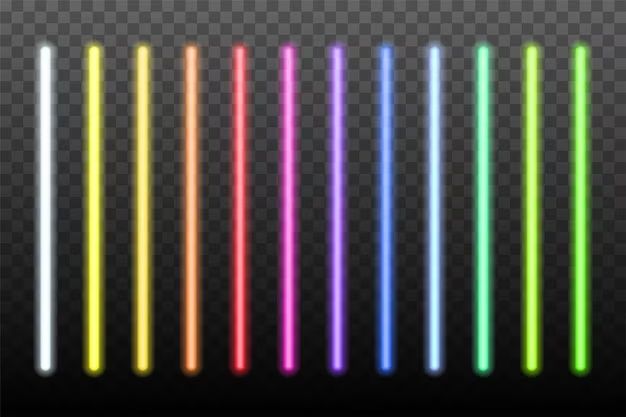The covers over fluorescent lights are most commonly referred to as light covers or diffusers. They are translucent plastic covers that go over the fluorescent light tubes to diffuse and soften the light coming from them. The covers serve both functional and aesthetic purposes in spaces where fluorescent lighting is used.
Page Contents
Purpose of Fluorescent Light Covers
Fluorescent light covers serve several important purposes:
Diffusing the Light
One of the main reasons the covers are used is to diffuse and soften the harsh, direct light that comes from fluorescent tubes. The plastic covers have a textured or frosted surface that helps scatter the light rays in many directions instead of beaming directly downward. This creates a more evenly distributed glow and prevents glare and eye strain.
Protecting the Tubes
The covers also protect the fragile fluorescent tubes from damage. The plastic shields the glass tubes from impacts, moisture, dust, and other environmental hazards that could cause them to break or stop working properly. This helps increase the lifespan of the fluorescent lighting system.
Improving the Aesthetics
Exposed fluorescent tubes can create a cold, industrial look that may not be desirable for many indoor spaces. The plastic covers give the fluorescent fixtures a more refined, finished appearance that better suits environments like offices, schools, hospitals, stores, etc. The covers can come in different colors and styles to coordinate with a room’s décor.
Types of Fluorescent Light Covers
There are a few main types of fluorescent light covers that can be used:
Wraparound Covers
These are long plastic sleeves that wrap directly around the fluorescent tubes. They come in different widths to accommodate standard tube sizes like T5, T8, and T12. The wraparound covers slide into place along the length of the tubes and are sometimes secured with end caps.
Rectangular Panels
These panels are made to fit into the frame that houses the fluorescent tubes. There are panels designed specifically for troffer-style fluorescent fixtures. The rectangular panels are dropped into the troffer frame and essentially replace the lens of the fixture with a plastic diffusing panel.
Round Covers
Some fluorescent tubes are housed in circular fixtures, like circular ceiling lights. For these, opaque plastic hemisphere-shaped covers attach to the frame around the tubes to provide diffusion.
Suspended Covers
For open ceiling grids with exposed fluorescent tubes, plastic sheet diffusers can be suspended below the tubes using wire or cable mounts. These help shield direct views of the tubes from below.
Materials Used for Covers
Fluorescent light covers consist of translucent plastic in different forms. Common materials used include:
Acrylic
Acrylic plastic is lightweight, durable and easy to form into sheets and shapes. Its high transparency makes it optimal for light transmission and diffusion. Pigments can be added to tint the acrylic different colors.
Polycarbonate
Polycarbonate is another strong plastic with excellent clarity. It also has high impact resistance, helping protect the tubes from damage. Polycarbonate diffusers withstand high temperatures.
Polystyrene
Polystyrene plastic has good optical properties and can be injection molded into precise shapes. It’s inexpensive and can be made opaque for better diffusion. It’s not as strong as other plastics though.
Fiberglass Reinforced Plastic
For increased durability in harsh environments, covers may consist of plastic reinforced with fiberglass. The fiberglass makes the diffusers shatter-resistant and able to withstand high heat.
Benefits of Fluorescent Light Covers
Here are some of the key benefits that fluorescent light covers provide:
Better Light Distribution
The textured plastic surfaces transform harsh fluorescent glare into a softened glow that more evenly fills the space. This reduces shadows and makes the space feel brighter.
Increased Visual Comfort
Diffused lighting from the covers creates a comfortable environment without excessive glare or contrast for occupants. It reduces eye strain headaches.
Improved Ambiance
The covers give fluorescent lighting a cleaner look that appears more integrated into a space, unlike bare industrial-appearing tubes.
Enhanced Light Quality
Covers filter out UV rays that can fade and damage materials. They also diffuse the cool, blue tones of fluorescent lighting into warmer hues.
Higher Efficiency
By scattering light widely, less fixture wattage is needed to illuminate a space compared to without covers.
Cleaning of Fluorescent Light Covers
Over time, dust, dirt, and grime can accumulate on the surface of fluorescent light covers, reducing their light transmission. Here are some tips for properly cleaning them:
Frequency
Covers should be cleaned every 2-3 months for maintenance. Heavily soiled covers may need cleaning monthly.
Supplies
Use a lint-free microfiber cloth, soft brush, mild soap or detergent, and plastic cleaner formulated for clarity. Avoid abrasive pads.
Method
Gently brush the covers with soap and water solution first. For stubborn dirt, spray plastic cleaner onto the cloth instead of directly on the cover. Wipe gently until clear.
Rinsing
Make sure to rinse off any soap residue thoroughly with clean water and wipe dry with microfiber cloth to prevent streaking.
Precautions
Take care not to use harsh chemicals, rough brushes or excessive force when cleaning, which could scratch the plastic cover surfaces.
Conclusion
In summary, the translucent plastic shields used over fluorescent lighting are referred to as diffusers or light covers. They serve to soften and spread the light from the tubes while protecting and concealing them. Acrylic, polycarbonate, and polystyrene are common plastic materials used to make the wraps, panels, and dome shapes that fit over various fluorescent fixtures. Regular cleaning of the covers helps maintain proper light diffusion and output. The diffusing lenses are an important component in fluorescent lighting systems in workplaces, retail stores, and other interior spaces.
